The neck pain started gradually. It is now unrelenting and accompanied by headache and brain fog. Radiographic and laboratory tests are normal. Medications are not helpful. You struggle completing tasks at work and at home. Your doctors are puzzled as to the cause of your pain. Your PT thinks you may have injured your neck ligaments. What is neck ligament laxity? What is Cranial Cervical Instability (CCI)? What is the Alar ligament? What are the 8 most common symptoms of Cranial Cervical Instability (CCI)? What causes Cranial Cervical Instability? How is Cranial Cervical Instability diagnosed? What are the options for neck ligament laxity treatment? What is the PICL procedure? What is the new book on CCI and the Road the Recovery? Let’s dig in.
What Is Neck Ligament Laxity?
Neck ligament laxity, also known as Cranial Cervical Instability (CCI) is a medical condition where the strong ligaments that hold your head to your upper neck are loose or lax (1). The major ligaments involved are the Alar, Transverse and Accessory ligaments. To learn more about CCI please click on the video below.
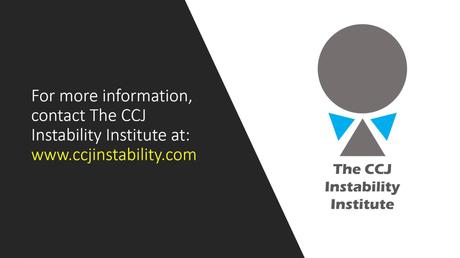
What Is the Alar Ligament?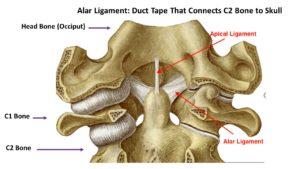

Ligaments are thick bands of connective tissue that connect one bone to another. The Alar ligament is in the upper portion of the cervical spine and connects the upper neck to your head. There is a right and a left Alar ligament which is illustrated to the right. The Alar ligament provides stability for your head and neck.
What Are the Symptoms of Cranial Cervical Instability? (8 Most Common)
Excessive movement between your head and neck can cause movement and damage of the upper cervical facet joints, discs, nerves, and blood vessels. Symptoms vary depending upon the amount of instability. Common Craniocervical Instability symptoms include:
1. Painful, Heavy Head

A constant to near-constant head pain can be described as feeling like the head is too heavy for the neck to support. Many describe feeling like they have a “bobblehead”.
2. Headache
This is not your normal headache caused by your in-laws or excessive consumption of alcohol. This is a debilitating headache that is constant in duration and miserable. Headache is often caused by the upper neck joints, muscles, and tendons getting injured due to ongoing instability.
3. Rapid Heart Rate
Elevated heart rate may occur as the vagus nerve gets irritated by the extra motion in the upper neck. Another cause of elevated heart rate is Postural Orthostatic Tachycardia Syndrome (POTS). POTS is a medical condition that causes malfunction of the autonomic nervous system. It is estimated to impact between 1,000,000 and 3,000,000 Americans. The autonomic nervous system controls involuntary body functions such as heart rate and blood pressure. Malfunction of the autonomic nervous system causes a number of symptoms which include rapid heart rate.
4. Brain Fog

Patients with CCI can struggle with memory, concentration, and ability to complete tasks. Every day can feel like your brain is stuffed full of cotton.
5. Neck Pain
Pain is typically localized at the base of the skull and aggravated with flexion and rotation. The pain can shoot up into the base of the skull, top of the head, frontal area or behind the eyes.
6. Visual Problems
Visual disturbances can vary from mild to severe involving a number of symptoms. Visual disturbances can happen because the upper neck supplies information to the brain to guide eye position and vice versa (2).
7. Dizziness
Balance problems can be a significant issue (3). Dizziness or imbalance is a feature related to the fact that the upper neck is a major contributor to balance (4). The upper neck provides position sense that has to be coordinated with balance information from the eyes and inner ear.
8. Chronic Fatigue
Excessive movement between the head and neck can cause irritation and dysfunction of the nervous system. The autonomic nervous system is the most affected. A common symptom of autonomic dysfunction is chronic fatigue.
Causes of Cervical Instability (Trauma and Hypermobility)
Trauma
Whether it is one major event or a series of repetitive traumas over time, trauma to the cervical spine can cause cervical instability. For example during a motor vehicle accident ligaments in the neck can be overextended, disrupted and injured leading to chronic cervical instability. Other examples include sports injuries or forceful chiropractic adjustments (5).
Inflammatory Conditions
Chronic inflammatory diseases can be debilitating. In such cases, a patient’s own immune system attacks itself resulting in inflammation, injury, and pain. Common examples include rheumatoid arthritis, scleroderma, and lupus. Patients with rheumatoid arthritis are at risk for Cranial Cervical Instability.
Congenital
Congenital disorders are also known as birth defects. There are many different types of birth defects which include cleft lip, cerebral palsy, and Down’s syndrome. Patients with Down’s syndrome are a risk for CCI (6).
Connective Tissue Disorders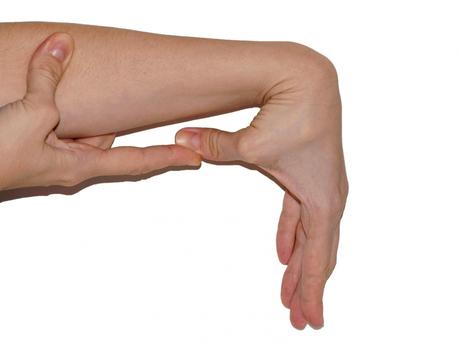

There are a number of medical conditions where the ligaments are loose due to defects in the connective tissue. These patients have overly flexible joints that allow them to very, very flexible. Ehlers Danlos Syndrome is a classic example of such patients (7). There are thirteen different subtypes. Symptoms can vary depending upon the severity of the condition. Patients with EDS can easily bend their thumbs backward so that they can touch their forearms. EDS patients due to their loose ligaments are a risk for Cranial Cervical Instability.
Diagnosing Cranial-Cervical Instability: 7 Main Criteria
Before we can explore neck ligamant laxity treatment, we need to discuss diagnosis, as the correct diagnosis is critical for the best clinical outcome. Diagnosing Craniocervical Instability involves 7 main criteria which include:
#1 Mechanism of Injury (How Did It Occur)
Understanding how and when the injury occurred is important. The two most common causes of Cranial Cervical Instability (CCI) are trauma and medical conditions that cause people to have loose or compromised ligaments (2). Motor vehicle accidents, contact sports, and forceful manipulations by chiropractors are the most common examples of trauma. Ehlers Danlos Syndrome (EDS) is a group of inherited disorders that affects your ligaments and connective tissues (2). This will be discussed in further detail below.
#2 Symptoms
As discussed above
#3 Physical Examination
In the age of managed care and 15-minute appointments, the art and practice of physical examination by a physician is almost gone. At the Centeno -Schultz Clinic all new patients undergo an extensive physical examination as part of their new patient evaluation. Why? It is important to view the body as a whole and explore the multiple potential physical findings in the neck, head, shoulder, and low back in patients with Cranial Cervical Instability.
#4 Radiographic Studies
There are various types of radiographic studies which include x-ray, CT scan, and MRI. Unfortunately, traditional MRI and CT studies ordered by your PCP and orthopedic surgeon do not evaluate the upper cervical spine or alar and transverse ligaments. Special radiographic studies are required which include upper cervical MRI or rotatory CT scan. In addition, there are additional studies that involve the patient moving during the examination. These studies are useful to identify instability. Examples include upright MRI with upright flexion/extension. To see how this works please click on the video below.
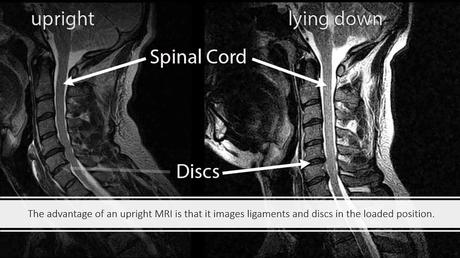
Finally, a Digital Motion X-ray (DMX) is important in establishing the diagnosis of CCI. This is an x-ray examination that is recorded in which the patient is put through various movements including bending the neck forward, backward, and to the side. To learn more about DMX and how it can diagnose the need for neck ligamant laxity treatment, please click on the video below.
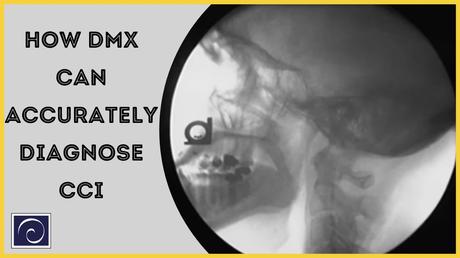
#5 Response to Conservative Care
The common symptoms of CCI can also arise from different clinical conditions. For example, headaches with dizziness may arise from tight or contracted neck muscles or injured facet joints. It is important that patients undergo conservative care such as rest, heat, stretching, physical therapy, massage, and chiropractic care. In some cases, symptoms improve with conservative therapy. To learn more about facet joint injuries please click here.
#6 Response to Diagnostic Injections
A diagnostic injection is a precise injection into a specific structure asking the question of whether or not it resolved the pain. Often times this is very helpful in the evaluation of patients with CCI. All diagnostic injections are performed under ultrasound or x-ray or both. Examples of diagnostic injections include:
- C0-1 and C1/2 facet injections
- Occipital nerve blocks
- Superficial Cervical Plexus Blocks
- Ligament injections
#7 Level of Disability
In many cases due to the severity of the symptoms patients are not able to complete their domestic or professional responsibilities. In severe cases of CCI, patients are confined to their homes and are socially isolated. The level of disability is important in diagnosing Craniocervical Instability (CCI).
Cranial Cervical Instability Treatment Options, (Neck Ligament Laxity Treatment Options)
There are three major types of CCI or Neck Ligament Laxity treatment. The specific type of treatment will depend upon the amount of instability and a patient’s clinical symptoms.
Conservative Care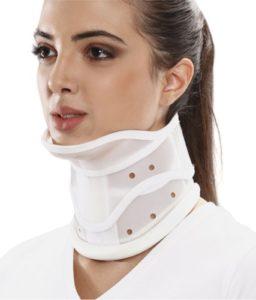

Patients with small amounts of instability can oftentimes be managed with conservative care. Treatment options include:
1. Upper cervical chiropractic care. Look for members of NUCCA (National Upper Cervical Chiropractic Association)
2. Physical Therapy
3. Bracing (insert an image soft collar.)
4. Curve restoration. Look for chiropractors that specialize: Chiropractic BioPhysics.
If conservative care fails to provide clinical improvement the next step of CCI or neck ligamant laxity treatment is x-ray guided injections of PRP or bone marrow concentrate into the upper cervical ligaments and facet joints.
Surgery

Upper Cervical Fusion
If conservative care and injections fail many patients are referred for surgery. There are many different types of surgical options all of which include a fusion. A fusion is a surgical procedure where screws and plates are inserted into the bone in an effort to stabilize a specific area. Fusions can be performed at different levels of the spine. The most common surgery for patients with CCI is a fusion of the head to the cervical spine. This is illustrated in the picture to the right. The procedure is major surgery with significant risks which include eventual arthritis above and below the fusion, misplaced screws in nerves of facet joints, and failure of the bones to fuse (non-union). Neck range of motion is permanently altered and in most cases severely restricted. If it fails to provide clinical benefit and there is no turning back. Surgery is permanent.
Regenerative Options
In 2015 a nonsurgical treatment option for Cranial Cervical Instability was developed at the Centeno-Schultz Clinic. It involves the injection of a patient’s own bone marrow-derived stem cells into the damaged Alar, Transverse ligaments. The procedure is very demanding and only performed at the Centeno-Schultz Clinic in Broomfield Colorado. The procedure is called Percutaneous Implantation of Cervical Ligaments (PICL) To learn more about this groundbreaking procedure please click on the video below.
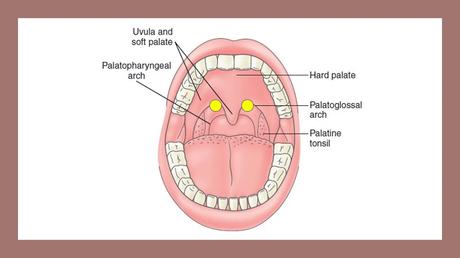
Cranial Cervical Instability Experts
Patients with CCI often have a long and difficult journey. Many are dismissed by their doctors or referred for psychological therapy. They bounce from one specialist to the next in the pursuit of answers and relief. The x-rays, MRI’s and laboratory tests are typically normal. Frustration and despair mount. The problem in most cases is that Cranial Cervical Instability is poorly understood by most providers and therefore the need for neck ligament laxity treatment is not recognized or diagnosed.
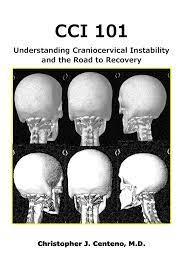
The Centeno-Schultz Clinic are experts in the evaluation and treatment of patients with neck and upper ligament instability. We have been successfully treating patients for the last 16 years. A new book by Dr. Centeno is now available that provides a better understanding of Cranial Cervical Instability. It covers everything from conservative care to surgery to newer precise Orthobiologic injection procedures like PICL that can help existing ligaments tighten down and stabilize the upper neck. This book is a must-read for anyone diagnosed with CCI. It is free and can be downloaded by clicking here
In Conclusion
- Neck ligament instability also known as Cranial Cervical Instability (CCI) is a medical condition characterized by injury and instability of the ligaments that hold your head onto the neck.
- Common symptoms of Cranial Cervical Instability include a painful, heavy head, headache, rapid heart rate, brain fog, neck pain, visual problems, dizziness, and chronic fatigue.
- Trauma is the most common cause of CCI however patients with hypermobility are at risk.
- There are 7 main criteria to establish the diagnosis of CCI. These include:
- Mechanism of Injury
- Symptoms
- Physical Examination
- Radiographic Studies
- Response to Conservative Care
- Response to Diagnostic Injections
- Level of Disability
- CCI or neck ligament laxity treatment options depend upon the severity of the instability and clinical symptoms. When appropriate, conservative care should always be the first-line treatment.
- Surgery is often recommended when conservative care fails. This involves a fusion of the head to the neck which is a major surgery that is associated with significant risks and complications.
- The PICL procedure is a revolutionary non-surgical treatment option where a patient’s own stem cells are injected into the damaged upper cervical ligaments.
- A new book, Understanding Cranio Cervical Instability and the Road to Recovery is a must-read for patients, providers, and families alike.
If you or a loved one has sustained an injury with ongoing headaches, neck pain, and brain fog please schedule a telephone candidacy discussion with a board-certified, fellowship-trained physician. From the comfort of your home or cabin learn what treatment options are available for you. Call today and stop the pain, misery, and suffering. Act now before you become dependent upon medications or you find yourself in a surgeon’s office desperate for relief.
1.Offiah CE, Day E. The craniocervical junction: embryology, anatomy, biomechanics and imaging in blunt trauma. Insights Imaging. 2017;8(1):29–47. doi:10.1007/s13244-016-0530-5
2.Sobey G. Ehlers-Danlos syndrome – a commonly misunderstood group of conditions. Clin Med (Lond). 2014;14(4):432-436. doi:10.7861/clinmedicine.14-4-432
3.Biesinger E. and Vertigo caused by disorders of the cervical vertebral column. Diagnosis and treatment. Adv Otorhinolaryngol. 1988; 39: 44– 51.
4..Thompson-Harvey A, Hain TC. Symptoms in cervical vertigo. Laryngoscope Investig Otolaryngol. 2018;4(1):109–115. Published 2018 Nov 28. doi:10.1002/lio2.227
5.Henderson FC Sr, Francomano CA, Koby M, Tuchman K, Adcock J, Patel S. Cervical medullary syndrome secondary to craniocervical instability and ventral brainstem compression in hereditary hypermobility connective tissue disorders: 5-year follow-up after craniocervical reduction, fusion, and stabilization. Neurosurg Rev. 2019;42(4):915-936. doi:10.1007/s10143-018-01070-4
6.Ashafai, Nabeel S.; Visocchi, Massimiliano; Wąsik, Norbert (2019). “Occipitocervical Fusion: An Updated Review“. Acta Neurochirurgica. Supplement. 125: 247–252. doi:10.1007/978-3-319-62515-7_35. ISSN 0065-1419. PMID 30610329.

